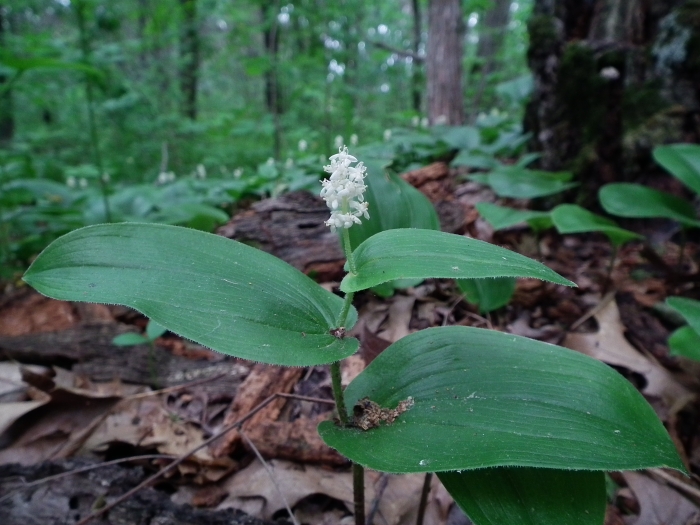Canada Mayflower
(Maianthemum canadense)
Canada Mayflower (Maianthemum canadense)
/
/

BlueCanoe
CC BY-SA 3.0



















































Estimated Native Range
Summary
Canada Mayflower is valued for its ground-covering ability, low maintenance, and the subtle charm of its white flowers followed by attractive red berries. It is often used in woodland gardens, shade gardens, and naturalized areas. It thrives in part shade to full shade, preferring moist, well-drained soils rich in organic matter. While it is adaptable to different soil types, it does not tolerate drought well. Canada Mayflower is generally pest and disease-free but can be sensitive to soil compaction and disturbance. It is not known to be invasive and is a beneficial native plant for supporting local ecosystems.CC BY-SA 4.0
Plant Description
- Plant Type: Herb
- Height: 0.3-0.5 feet
- Width: 0.3-0.5 feet
- Growth Rate: Rapid
- Flower Color: White
- Flowering Season: Spring, Summer
- Leaf Retention: Evergreen
Growth Requirements
- Sun: Part Shade, Full Shade
- Water: Medium
- Drainage: Slow, Medium, Fast
Common Uses
Bee Garden, Bird Garden, Butterfly Garden, Edible*Disclaimer: Easyscape's listed plant edibility is for informational use. Always verify the safety and proper identification of any plant before consumption., Fragrant, Groundcover, Low Maintenance
Natural Habitat
Cool, moist, deciduous, and mixed forests
Other Names
Common Names: Canadian May-Lily, False Lily-Of-The-Valley, Canadian Lily-Of-The-Valley, Wild Lily-Of-The-Valley, Two-Leaved Solomon’s Seal
Scientific Names: , Maianthemum canadense, Maianthemum canadense var. interius, Maianthemum canadense var. canadense, Maianthemum canadense subsp. interius, Unifolium canadense, Maianthemum canadense var. carolinianum, Unifolium eschscholtzianum, Maianthenum canadense, Smilacina bifolia var. canadensis
GBIF Accepted Name: Maianthemum canadense Desf.